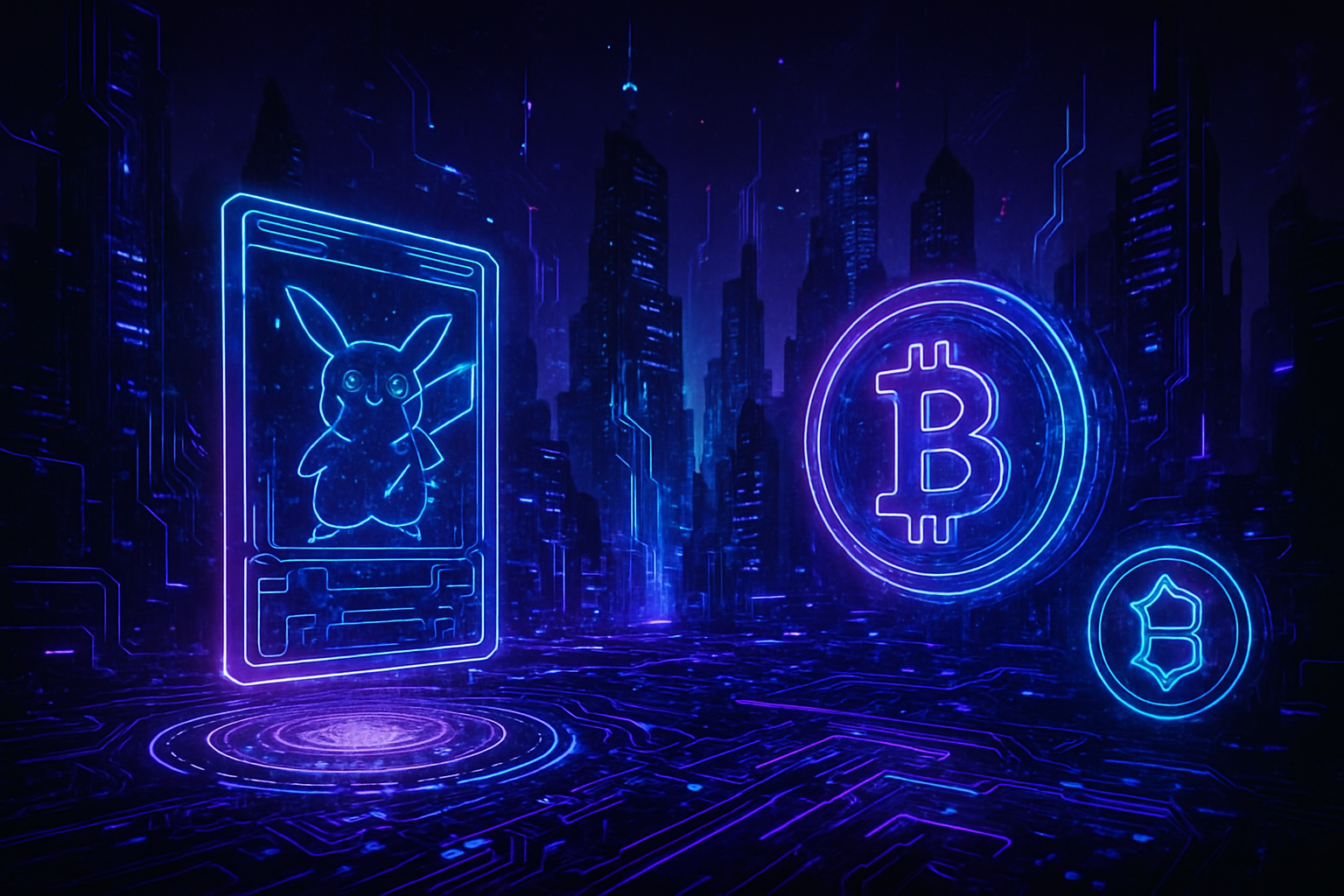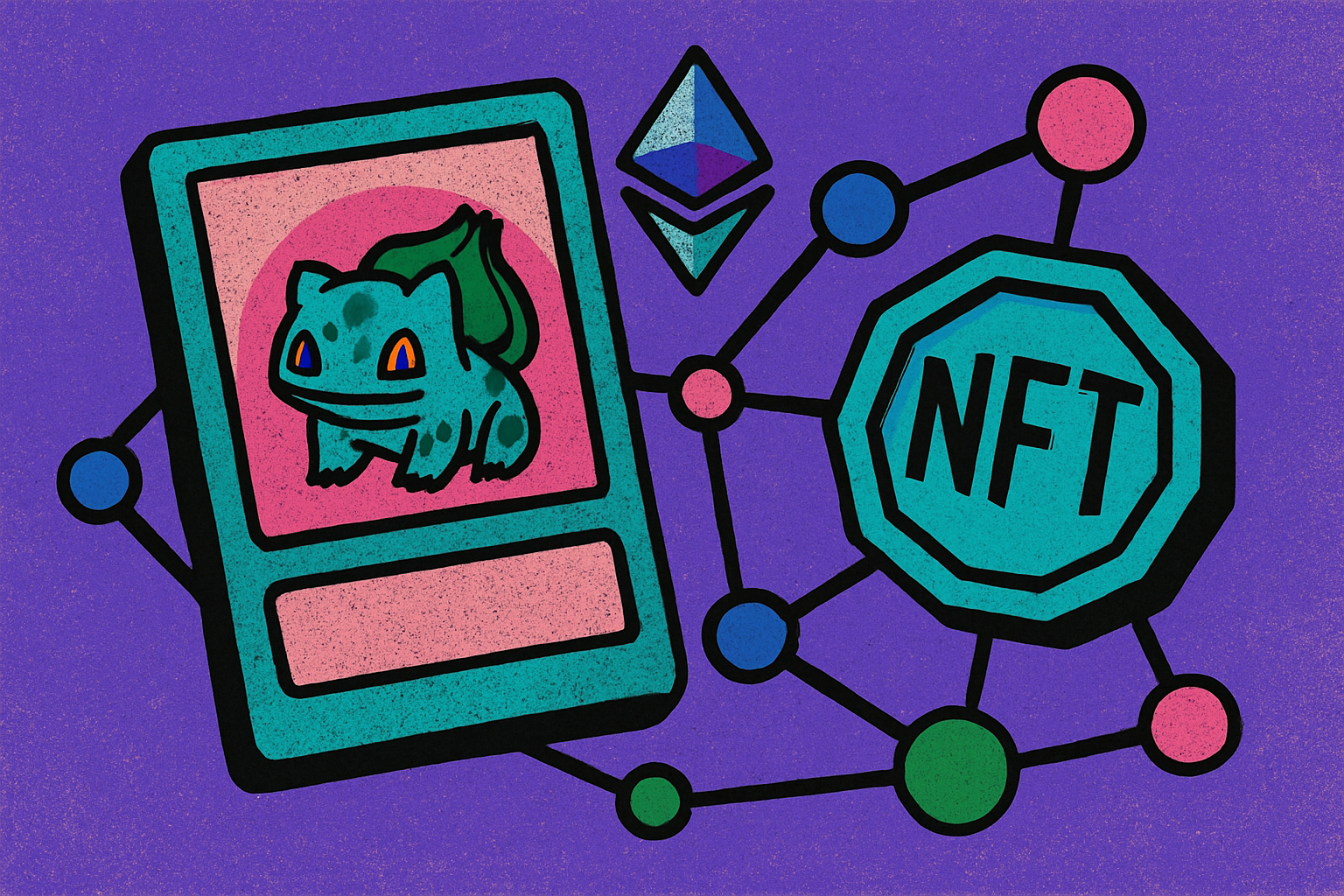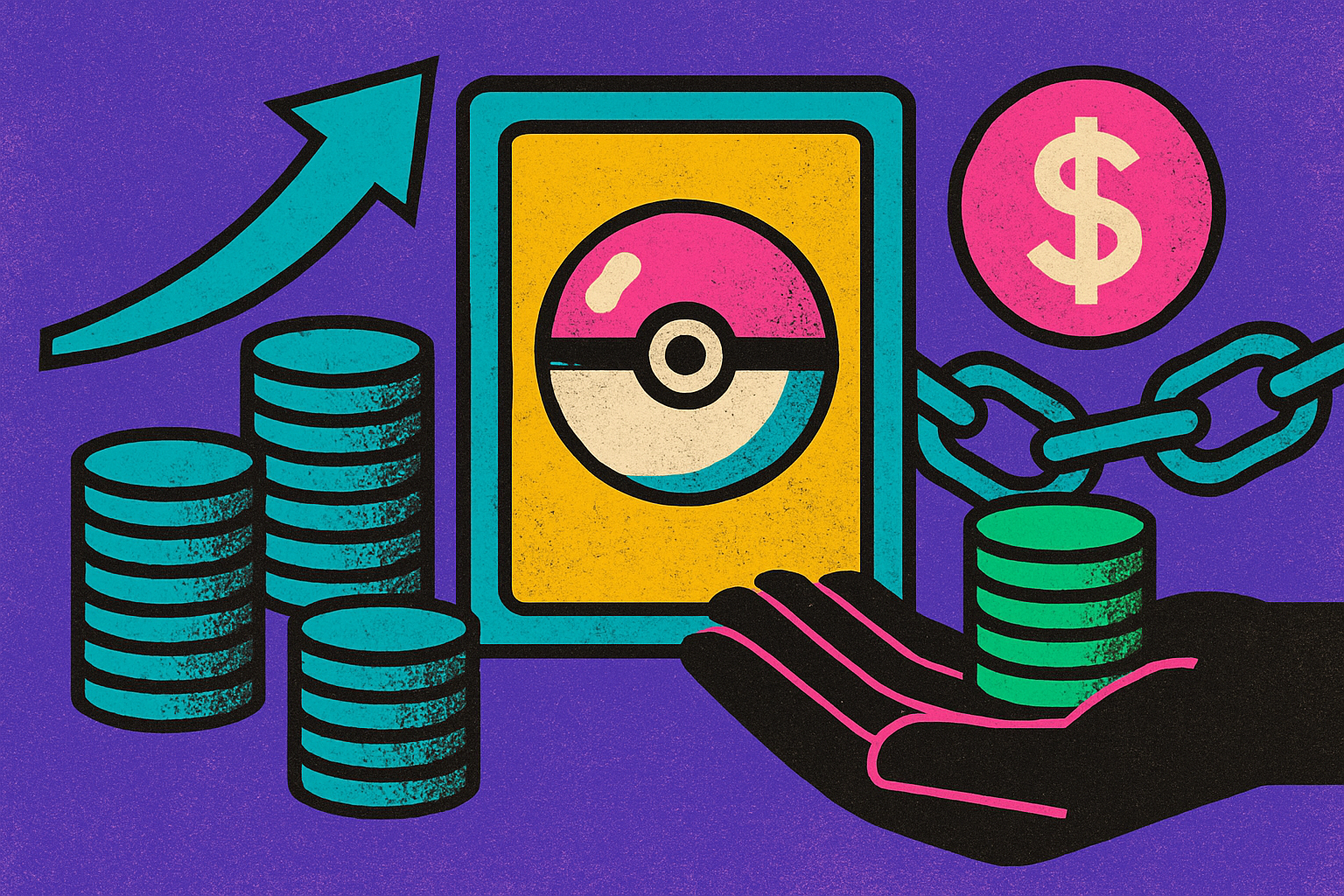
The world of Pokémon cards is undergoing a digital renaissance, fueled by the explosive growth of tokenized Pokémon cards. In August 2025, monthly trading volumes for these on-chain collectibles soared to $124.5 million, representing a remarkable 5.5x increase since January. This surge is not just a passing trend; it’s the emergence of a new collectibles economy where physical assets meet blockchain technology, unlocking unprecedented liquidity and accessibility for collectors and investors alike.

What Are Tokenized Pokémon Cards?
At their core, tokenized Pokémon cards are digital representations (NFTs) of real, physical trading cards that are securely stored in third-party vaults. Each NFT serves as proof of ownership and can be traded instantly on blockchain platforms. If you own the token, you have the right to redeem it for the corresponding physical card – blending the tangibility of classic collecting with the speed and transparency of crypto. This physical-to-NFT Pokémon model addresses some of the biggest pain points in traditional collecting: slow shipping, authenticity concerns, and limited access to global markets.
Platforms Powering the On-Chain Collectibles Boom
Two platforms stand out in driving this new market: Collector Crypt and Courtyard. Collector Crypt operates on the Solana blockchain and has introduced innovative features like the “Gacha Machine, ” where users purchase randomized digital packs linked to real cards. In August 2025, Collector Crypt reported $44 million in trading volume, up 124% month-over-month. Meanwhile, Courtyard, built on Polygon, offers NFT-linked giveaways and mystery packs, each tied to a graded card held in secure storage. Since its launch, Courtyard has minted over 3 million trading card NFTs, underscoring the sector’s explosive growth and appeal.
Why Tokenized Trading Card RWAs Are Attracting Attention
Tokenization solves several persistent challenges for collectors and investors:
- Enhanced Liquidity: Cards can be traded instantly on global marketplaces without the delays or risks of shipping physical items.
- Fractional Ownership: High-value cards can be split into affordable shares, opening up blue-chip collectibles to a wider audience.
- Lower Transaction Costs: Blockchain-based platforms often undercut the fees charged by legacy auction houses or online marketplaces.
- Transparency and Security: NFT ownership records are immutable and verifiable by anyone, reducing fraud and enhancing trust in high-value transactions.
This new model is especially attractive as the broader trading card market is valued at $21.4 billion, with Pokémon cards consistently at the top for both cultural cachet and investment potential.
Market Growth, Investor Sentiment, and What’s Next
The numbers tell a compelling story. With $124.5 million in tokenized Pokémon card trades in August alone, the sector is outpacing much of the NFT market – even as total NFT sales counts have declined. Collector Crypt’s native token, CARDS, saw a tenfold price increase in its debut week, reflecting soaring demand for trading card RWAs. The success of redeemable NFTs and innovative mechanics like gacha packs is drawing both traditional collectors and crypto-native investors into the space.
If you’re curious about how to start your own journey into Pokémon card NFTs, check out our step-by-step guide for collectors.
Still, as with any emerging market, the rapid ascent of tokenized Pokémon cards brings both opportunities and challenges. While enhanced liquidity and global reach are game-changers, the market is not immune to volatility. Prices for sought-after cards can swing dramatically in response to news, influencer activity, or broader crypto trends. Regulatory clarity is also evolving, with platforms working proactively to ensure compliance and build trust among both seasoned collectors and newcomers.
One of the most transformative aspects of trading card RWAs is fractional ownership. For example, a coveted Charizard card that might have been out of reach for most collectors can now be divided into hundreds or thousands of shares. This democratizes access, letting fans own a piece of iconic collectibles without needing deep pockets. At the same time, it introduces new dynamics around governance and redemption, questions like who decides when a card is redeemed or resold are being addressed through smart contracts and platform policies.
How Tokenized Pokémon Cards Are Changing Collector Behavior
The on-chain collectibles revolution is reshaping how people interact with Pokémon cards. No longer limited by geography or logistics, collectors from Tokyo to Toronto can participate in real-time auctions, instant trades, and community-driven events. Platforms like Courtyard are even experimenting with gamified drops and mystery packs that blend nostalgia with cutting-edge tech.
For many, the appeal goes beyond speculation. The transparency of NFT ownership records means provenance, the chain of custody for each card, is easier to verify than ever before. This is especially important as high-value cards move between hands more frequently on-chain than in traditional markets.
What Collectors Should Watch For
- Redemption Policies: Always check if your platform offers guaranteed redemption for physical cards, and understand any associated fees or timelines.
- Platform Security: Ensure your chosen marketplace has robust vaulting procedures and insurance for stored assets.
- Community Reputation: Engage with collector communities for insights on trustworthy platforms and upcoming drops.
- Regulatory Updates: Follow news on RWA NFTs as legal frameworks continue to develop globally.
The Road Ahead for On-Chain Trading Card Collectibles
The fusion of blockchain technology with physical trading cards is still in its early innings. As infrastructure matures and more collectors embrace tokenization, expect continued innovation, think dynamic NFTs that evolve with tournament results or exclusive community perks unlocked by holding specific cards. The success of Pokémon card NFTs paves the way for other franchises, Magic: The Gathering, Yu-Gi-Oh!, sports cards, to follow suit, broadening the RWA landscape even further.
If you’re ready to explore this new frontier yourself, our comprehensive guide on how tokenized Pokémon cards are changing the trading card market in 2025 offers practical tips for safe collecting and smart investing.
The numbers speak volumes: with $124.5 million in monthly trading volume as of August 2025, tokenized Pokémon cards are no longer a niche experiment, they’re a cornerstone of the evolving on-chain collectibles economy. Whether you’re a lifelong collector or just crypto-curious, this space offers new ways to engage with nostalgia, investment, and community on a truly global scale.



